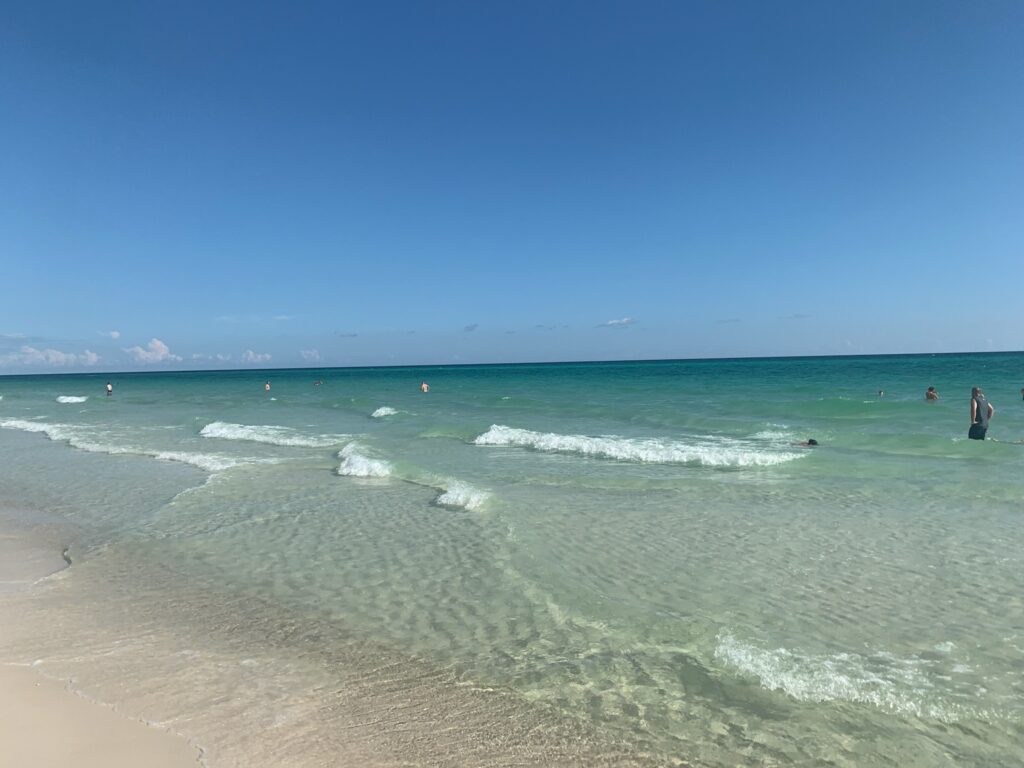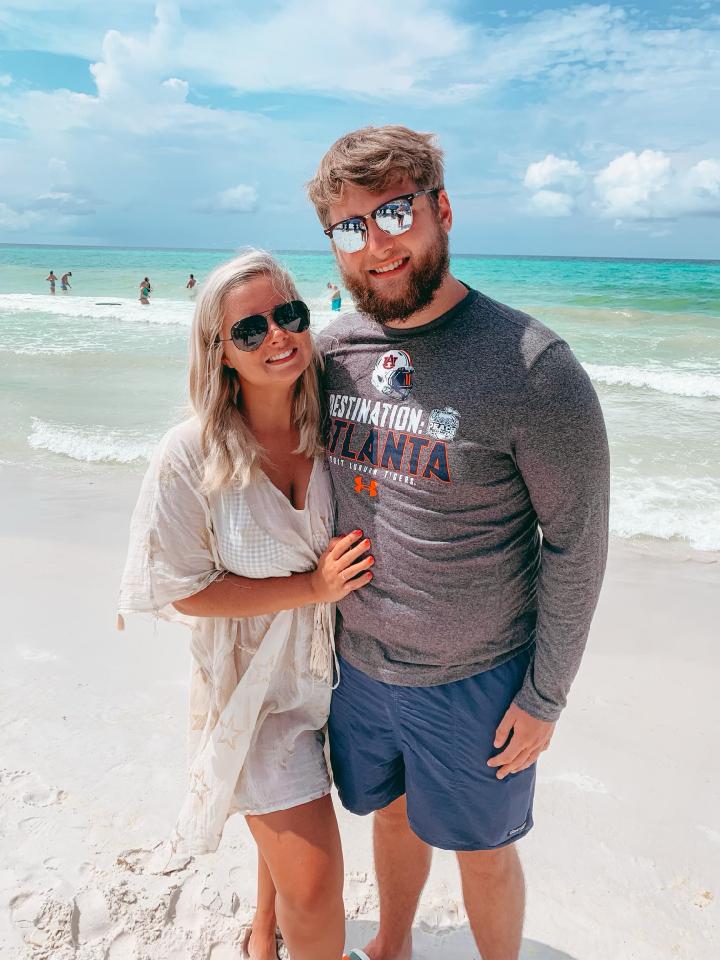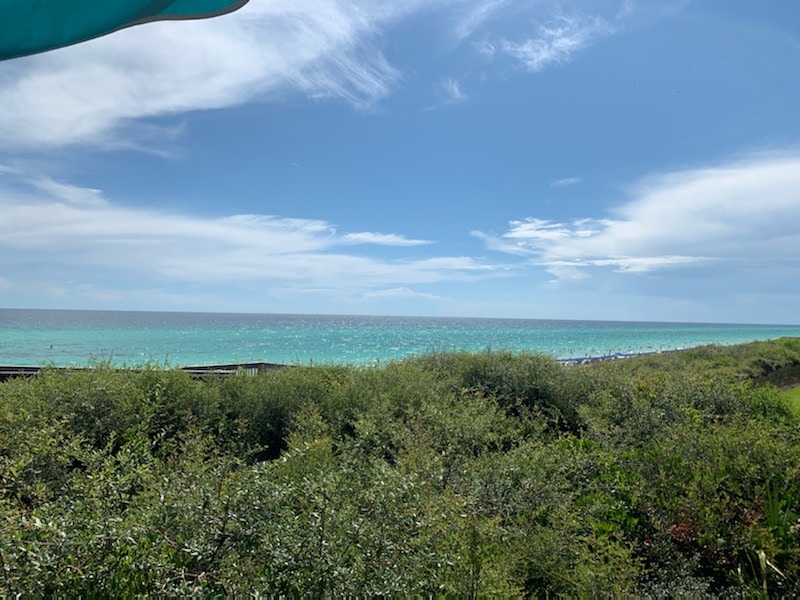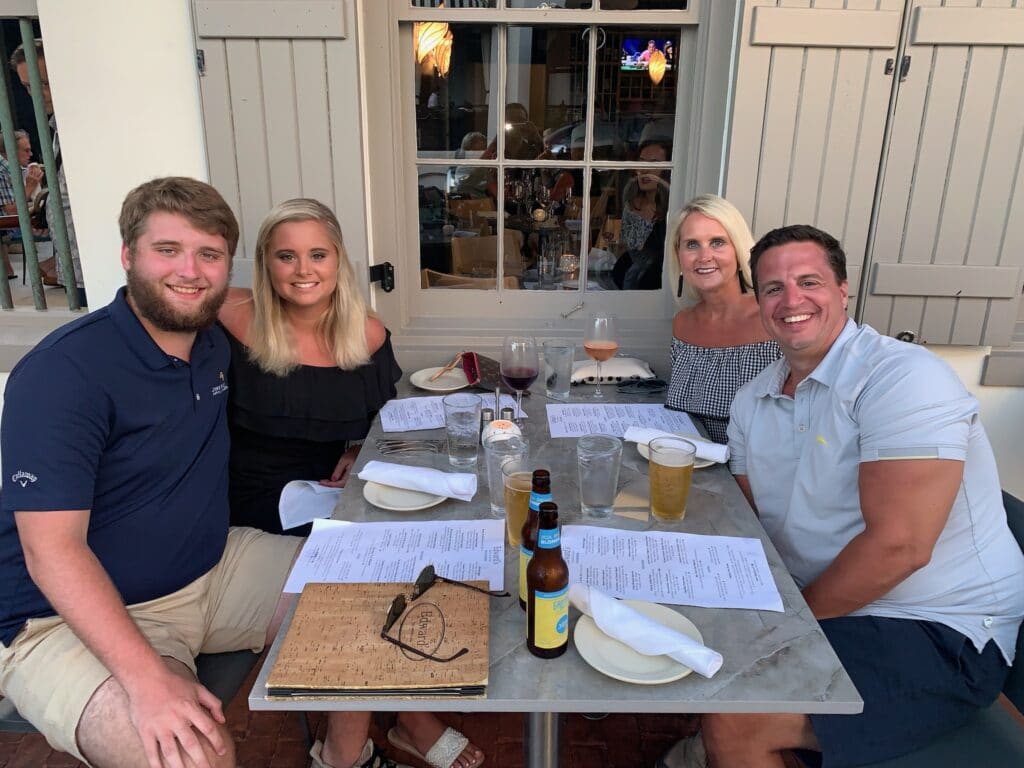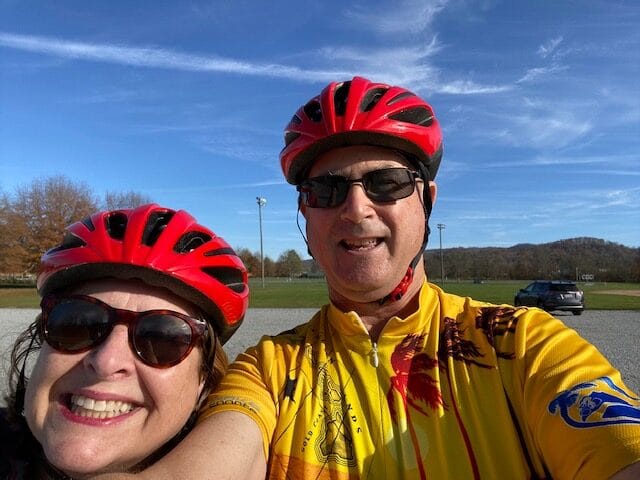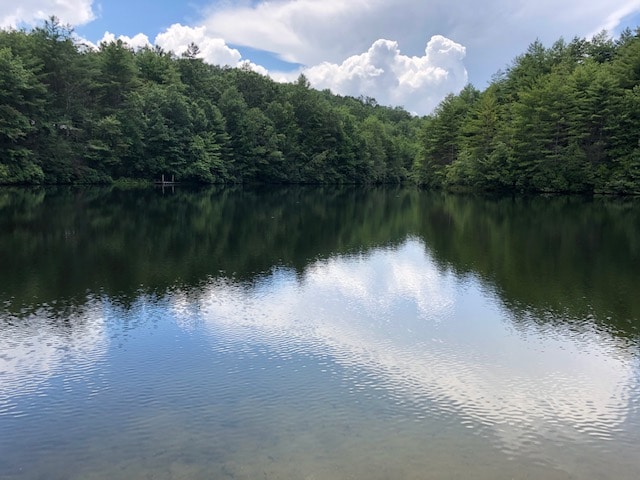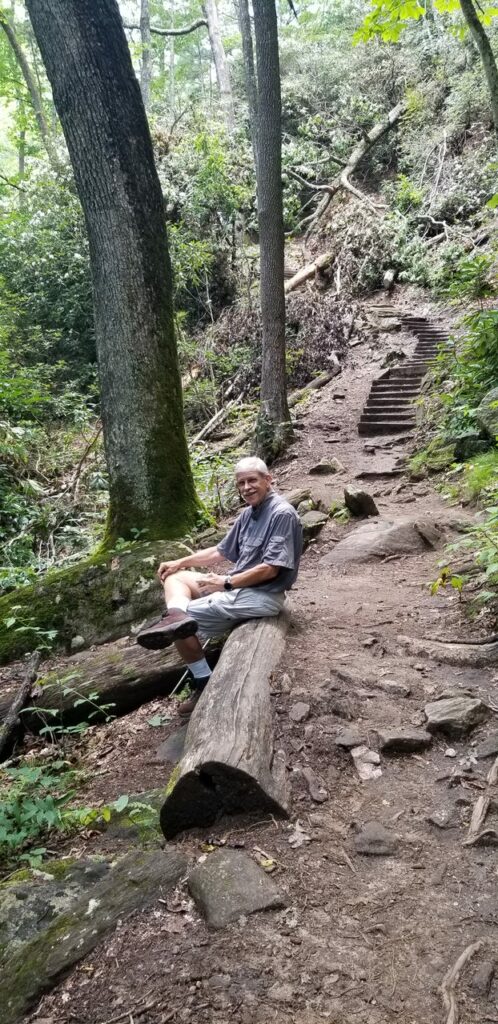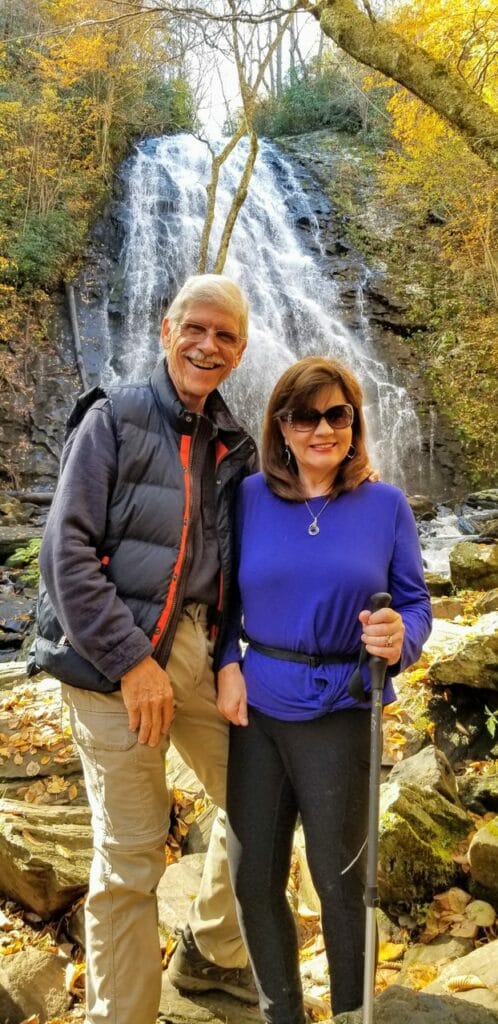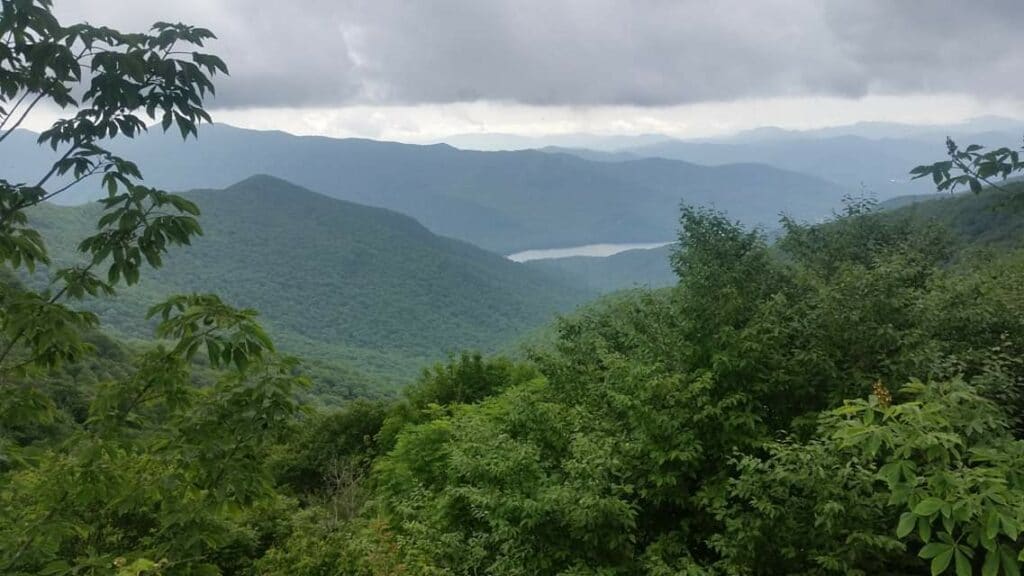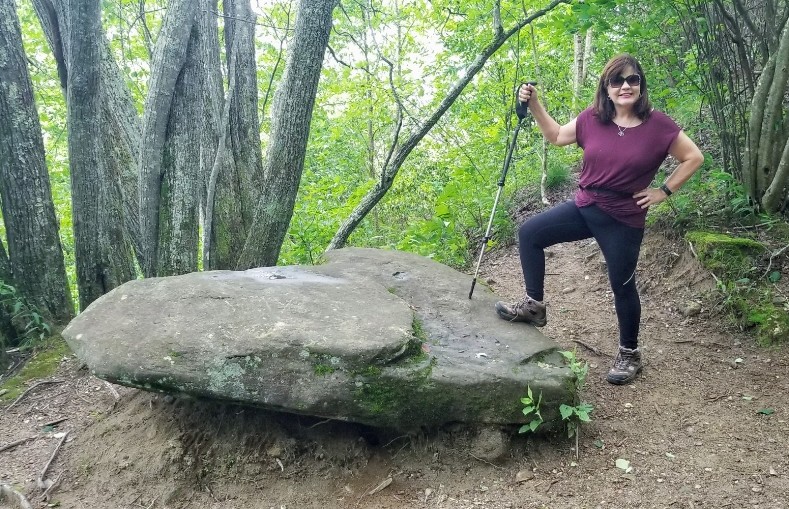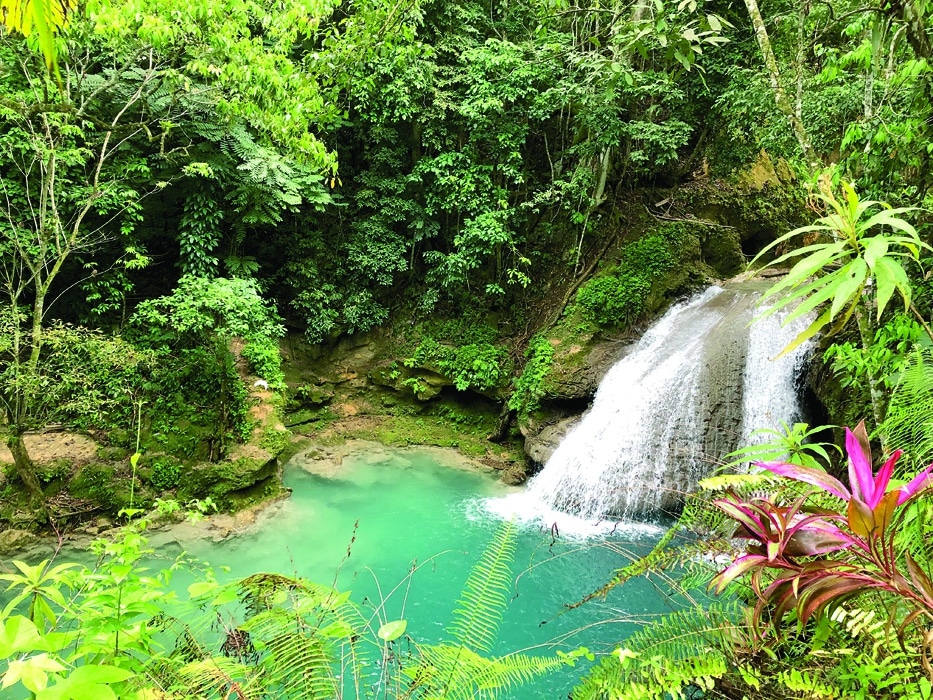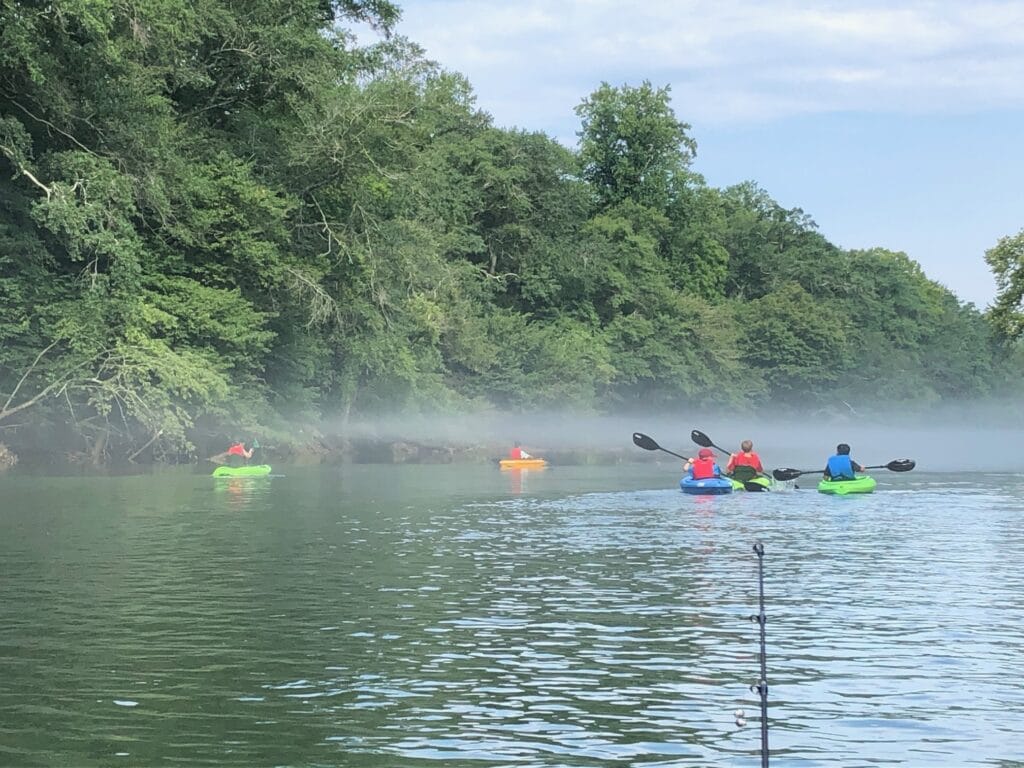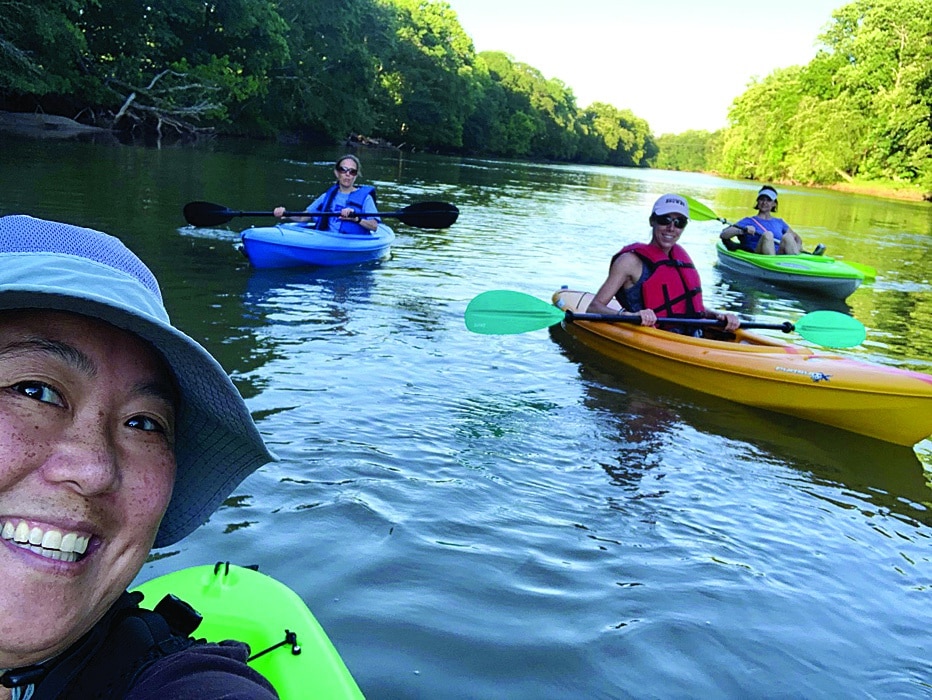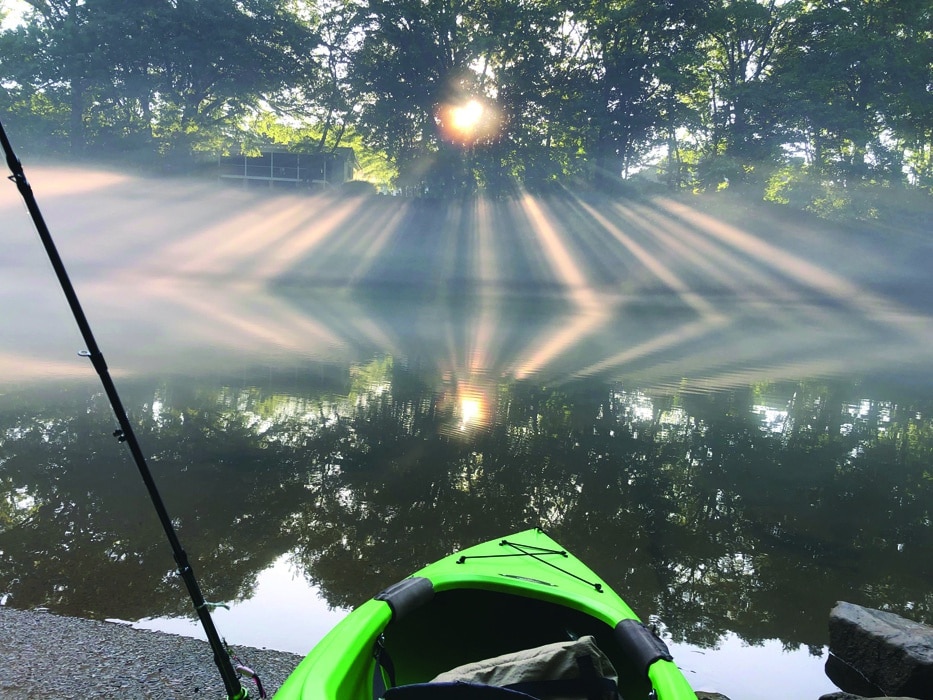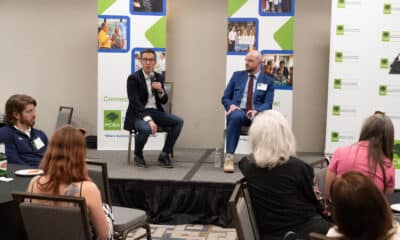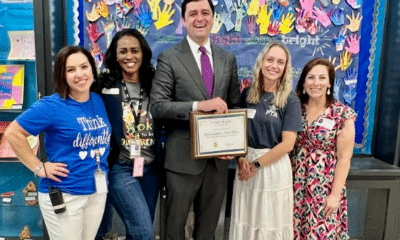Community
What Are You Doing this Summer, Peachtree Corners?
Published
4 years agoon
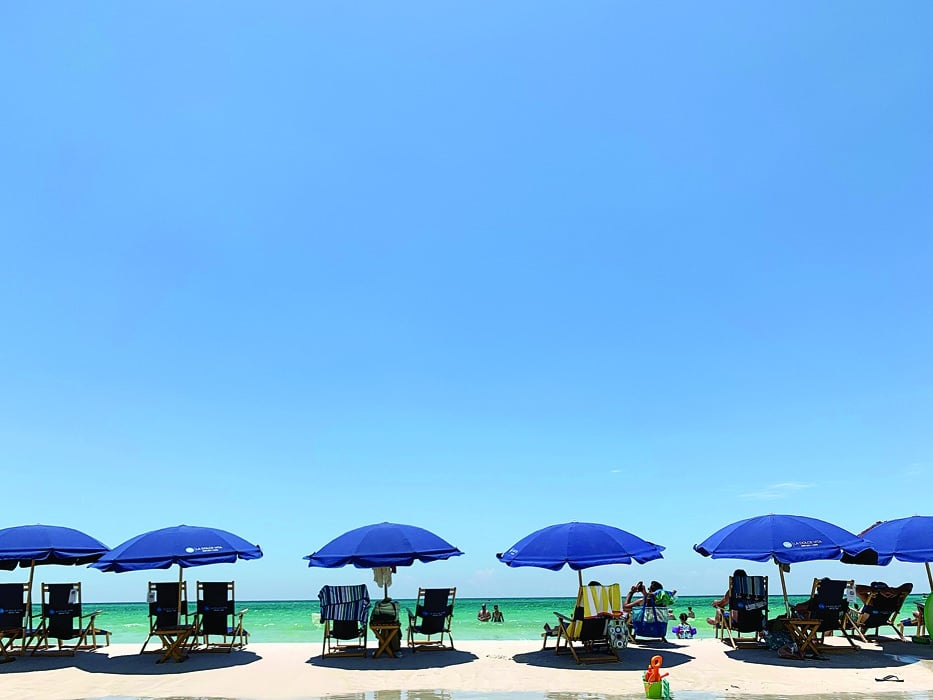
Geographically blessed, we can pretty much stay put or head in any direction from our city and end up someplace nice for summer vacation. Whether you’re on a budget or seeking five-star accommodations, there is something to guarantee a fun summer getaway for all Peachtree Corners families.
Wisdom from a travel advisor
Luxury Travel Advisor Jeanne Derderian shared some vacation trends. When travel became complicated due to COVID-19, area residents flocked to road trip destinations like Charleston, Kiawah Island, Blackberry Island, Amelia Island and the Florida panhandle, she said.
Why use a travel advisor? “We have access to discounted rates and perks like complimentary breakfast and resort credit,” Derderian shared.
With ever-changing travel requirements for each state and country, it makes sense to have a professional manage the details. “I’ve always handled tours, hotels, restaurant reservations and spa appointments, but now there’s a lot more to do because of COVID. You have to follow the rules exactly or you won’t get in,” she said.
From perfectly timed COVID tests to downloading apps — in Iceland for example, visitors must use an app that tracks them during their stay — Derderian can make your trip seamless. Find her on Facebook (@JeanneLargayTravel) and on Instagram (@jeannederderian).
A sign of the times
Before the pandemic, Europe was the most popular summer destination. “I’m advising clients not to book Europe now. People are still locked down,” Derderian said. “You want to have the full experience. If museums, excursions and restaurants are closed, it’s just not the same.”
Now more than ever, with people avoiding cities and destinations abroad, she is being asked to help with beach trips as U.S. beaches become increasingly crowded.
“Everyone wants to go to the beach or to the mountains. There aren’t enough hotel rooms to rent. There is not much availability nowadays,” she warned. “For a beach, I’d consider Mexico or an island, if you’re comfortable getting on a plane.”
Top beach destinations include Florida’s gorgeous panhandle, Watercolor Beach, Rosemary Beach and the Keys. Other favorites include South Carolina beaches, like Myrtle Beach and Hilton Head, as well as Georgia’s Sea Island.
“All of the trips that were booked for last year got canceled. They’ve since been rebooked, so there’s not a lot of availability through 2023,” Derderian explained.
Supply and demand have driven prices up, she noted. The luxury hotel in Watercolor Beach and The Pearl in Rosemary Beach are more expensive now. The same room she booked for someone in Jackson Hole last year costs double this year. Nonetheless, she is certain the hotels will be sold out.
Storey, Alex, Jennifer, and Brandon Hathaway enjoying a family beach vacation. Photos courtesy of Jennifer Hathaway.
Travel tips from a pro
■ Plan ahead for a rental car. Cars are difficult to get and they’re expensive. For a recent Yellowstone Trip she booked, rental cars were going for $6,000 a week. Whereas a rental car was once a last-minute consideration, Derderian suggests securing a rental before you even purchase flights. “Rental car companies sold off their fleets when the pandemic hit. There are very few cars available. It’s something you really need to consider up front and make sure you’re comfortable incurring the cost,” she said.
■ Among the top places to visit this summer is Iceland. “Iceland just opened up, that could be a great place to go,” Derderian said. “U.S. cities like New York and Washington, D.C. — the prices are good, and they’re starting to open up.” National Parks, not necessarily the best-known ones, should be explored, she added. “If you’re willing to be a little more adventuresome, the Faroe Islands are open to vaccinated Americans, and there are not many cases of COVID there.” The trick today, according to Derderian, is to find the sweet spot — a place that’s open, and relatively safe.
■ If you’re seeking U.S. beach or mountain destinations, it won’t be easy to find something available — and it’ll be expensive. “Make a good friend who has a home there,” she said. “Otherwise, it’s going to be hard.” But it may well be worth it. “You can rent a home in Blue Ridge,” suggested Derderian. “It’s just gorgeous. We have a mountain home there, and it’s only two hours away.”
As for Derderian’s own summer plans? She’ll be heading to Aruba at the end of May to celebrate her mother-in-law’s 86th birthday. Multi-generational family trips is another trend. Later, she and her husband will check out an all-inclusive adult resort in Cancun.
A woman’s work is never done! Some college visits will be planned, if campuses open up, and in July, she’s hoping restrictions will be lifted in Greece.
See the USA
Beach, please! Is the beach your happy place? Head south, to northwest Florida. Just a five-hour road trip away or a one-hour flight, the Florida panhandle offers 200 miles of white sand beaches with crystal waters guaranteed to scratch anyone’s itch for a beach getaway.
Along the beaches in South Walton, Florida scenic route 30A stretches between Destin and Panama City, dotted with upscale beach towns boasting views of the Gulf of Mexico’s turquoise waters, and sugary white sand beaches. Jennifer Hathaway and her family love to escape there.
“The beautiful beaches, great restaurants and cute boutiques of 30A are a great option for Peachtree Corners families. Our favorite is Rosemary Beach,” Hathaway said. “It’s family-friendly. It looks like a European village with a town square and cobblestone pathways. The vacation homes and condos reflect the same architecture.”
Why 30A gets an A+
The area offers tennis, fitness centers, pools, yoga on the green, standup paddleboard (SUP), kayak and bike rentals, private golf courses, concerts on the green, movie nights and kid friendly events, so it’s appealing to all ages.
Beach service includes chair and umbrella rentals and bonfires at night. Restaurant options range from fine dining (Restaurant Paradis) to casual (Cowgirl Kitchen). “Our favorite is La Crema Tapas and Chocolate — fabulous food, wine and delicious chocolate desserts,” Hathaway said.
Ample green spaces and boardwalks provide easy access from vacation homes to beaches, restaurants and shops. The beach towns in this area (Seacrest, Alys, Watersound, Seagrove, Seaside, Watercolor, Grayton Beach, Blue Mountain, Dune Allen) are connected by sidewalks where people can stroll, jog and bike.
Hathaway shared, “With so many cute beach towns, each with its own style and personality, great restaurants, coffee and ice cream shops, wine bars, breweries, bookstores and cute boutiques, everyone will find their perfect beach on 30A!”
There are only two types of Peachtree Corners residents, those who have been to 30A and those who will go to 30A.
The mountains are calling, and I must go!
If you prefer higher elevations and cooler temperatures for some relief from the Georgia summers, that segment of the Appalachian Mountains in northeast Georgia is a must. Quaint mountain towns and stunning views await in historic towns like Ellijay, Blue Ridge, and Blairsville. For those willing to travel outside of Georgia, other beautiful mountain destinations are not too far away.
Brevard, NC
A three-hour drive away from their Peachtree Corners home, Brevard, North Carolina has drawn Jay and Susan Polokoff for over 20 years. The condo they recently inherited from Susan’s parents is located in a valley overlooking a river and a golf course. The community is an Audubon Conservatory — a nature lover’s dream for bird watching, gardening and wildlife sightings.
Susan and Jay Polokoff enjoy biking in Brevard, North Carolina – a biking destination. A peaceful lake in Brevard, North Carolina. North Carolina, the land of
incredible waterfalls.
Photos courtesy of Jay and Susan Polokoff.
Once a retirement destination, Brevard has seen an influx of young families moving in since the pandemic. Many are second homeowners from all over.
“It’s a great mountain community with just about everything you’d want to do. There’s access to hiking. There are five natural spring-fed lakes, perfect for swimming and kayaking,” Susan said. “Brevard boasts nice restaurants, an old-fashioned downtown area with a movie theater, candy and ice cream shops, an art gallery, breweries and a farmers market on Saturday mornings.”
Jay enjoyed the Brevard Music Center bringing in guest conductors every year, until COVID struck. Visitors can hike in the DuPont State Recreational Forest where many scenes of the 2012 blockbuster “The Hunger Games” was filmed.
It’s also a draw for mountain bikers. This small town of 8,000 boasts four bike shops. “We like to ride bicycles. They built the Brevard Bikeway that goes from downtown into Pisgah National Forest. You don’t have to ride with traffic for the most part,” Susan said.
Motorboats are not allowed on the spring-fed lakes, only canoes, kayaks and paddle boards. The water is clear and like glass.
The Polokoffs like to spend a week or long weekends in Brevard. Their 32-year-old daughter enjoys visiting and hiking there, too. With Jay on the cusp of retirement, they plan to spend more time there in June, July and August.
Waynesville, NC
Bob and Lori Howard enjoy summer hiking trips to Waynesville, North Carolina. Photos courtesy of Lori Howard.
Every June, Bob and Lori Howard plan a two or three-day hiking trip to Waynesville, North Carolina. They like to stay at the Waynesville Golf and Country Club, and one of their favorite hikes is nearby Flat Laurel Creek.
To learn about the Flat Laurel Creek hike, visit hikewnc.info/besthikes/black-balsam/flat-laurel-creek.
Travel Abroad
Ocho Rios, Jamaica
Franklin’s children, soaking in the beauty during their family vacation. A stunning waterfall at the Blue Hole in Jamaica. Prudence Franklin relishes returning to her hometown during her summer vacations to Jamaica. Shown here, on her way up the mountain for the Bobsled ride. Photos courtesy of Prudence Franklin.
Prudence Franklin and her family enjoy summer visits to Ocho Rios, Jamaica about every three years. Franklin grew up in Oracabessa, where the 12 original James Bond novels were written and where two of the Bond films were made.
“There’s a beach called the James Bond Beach,” Franklin said. It’s on the north shore. On the outskirts of Ocho Rios, in Brighton, one can visit the Blue Hole, a natural limestone sinkhole and mineral spring with azure waters 20 feet deep, which Franklin describes as “the Garden of Eden.”
In Ocho Rios, you can swim with the dolphins, tour in glass bottom boats and enjoy a roller coaster-like bobsled ride through the rainforest in homage to the 1988 Jamaican Bobsled team from the movie, “Cool Runnings.”
“The people are friendly, really relaxed and laid back. Your vacation can be as active or quiet as you like,” Franklin shared.
Franklin and her family prefer active vacations. They like to incorporate learning something new on their travels. When heading to Tennessee for example, they’ll stop along the way and visit Indian reservations where they can see artifacts and learn about The Trail of Tears.
Ambergris Caye, Belize
Hanson purchased a condo on Ambergris Caye, Belize, her favorite summer getaway. Photos courtesy of Evan Hanson. An ocean view of Belize.
How about visiting a place where local wildlife includes toucans, parrots, jaguars and monkeys? Evan Hanson loves Belize so much, she purchased a condo on Ambergris Caye, an island off of Belize in Central America, east of Guatemala. Belize is becoming a favorite vacation and retirement spot.
“If you love the beach or outdoor activities, this is the place for you,” Hanson stated. Besides relaxing on the beach, possible activities include snorkeling, scuba diving in the world’s second largest reef, fishing and swimming with the sharks, stingrays — and if you’re lucky, manatees and whale sharks. There’s also sailing, kayaking, ziplining, cave tubing, spelunking, visiting Mayan Ruins or the zoo, and hiking by waterfalls.
Belize encompasses a multitude of cultures. Everyone is bilingual because the official language is English. “You can speak Spanglish and fit right in,” Hanson said.
The local cuisine is characterized by its Jamaican and Caribbean influences. Fish is prevalent. During lobster season, lobster is both abundant and affordable. Belizean fry jacks (fried dough) — sweet or savory — are a local breakfast favorite.
“What I love most about Ambergris Caye is the people — they are the nicest — followed by the ocean,” Hanson said.
Ambergris Caye is a party town, with lots of fun bars on the water. One of Hanson’s favorites is a place called Truck Stop, a bar with live music, games, a pool and food trucks. During the high season, large crowd of locals and tourists gather there.
Hanson’s condo, just steps from the ocean, may be available for your summer vacation! Visit indigobelize.com/beachfront-condo-4a/.
Staycation
Fun on the Hooch!
“My family and friends love to play on the water and there’s nothing more convenient than the Chattahoochee River which runs right through Peachtree Corners,” said Sonia Lee. Activities include playing on the rocks at Jones Bridge Park and kayaking down the river.
“My friends and I also love to have moms-only floats down the river,” Lee shared. For the past several years, she has organized a Beach Day for her kids and their friends at Buford Dam Park on Lake Lanier.
In an effort to “give back” to the river which provides so much enjoyment, they volunteer regularly at the bi-annual Sweep the Hooch event to help clean up the parks along the river, as well as the Chattahoochee itself. To get involved visit chattahoochee.org/sweep-the-hooch/.
Children kayaking on the Chattahoochee River. Photos courtesy of Sonia Lee. Ladies on the river – Sonia Lee with some of her friends – “the kayaking gang” – making their way down the Chattahoochee River. River serenity: One of Sonia Lee’s favorite pictures, taken at sunrise from the boat ramp at Medlock Bridge Park.
For more local summer activities visit exploregeorgia.org/city/peachtree-corners.
As the old adage goes, travel is the only thing you buy that makes you richer. Whether you’re traveling internationally, across the U.S. or staying in Georgia this summer, there are plenty of opportunities to get out and visit something new. I hope you do, and I’m wishing you all a safe and amazing summer!
Once a year, go someplace you’ve never been before. — Dalai Lama
Related
Patrizia hails from Toronto, Canada where she earned an Honors B.A. in French and Italian studies at York University, and a B.Ed. at the University of Toronto. This trilingual former French teacher has called Georgia home since 1998. She and her family have enjoyed living, working and playing in Peachtree Corners since 2013.

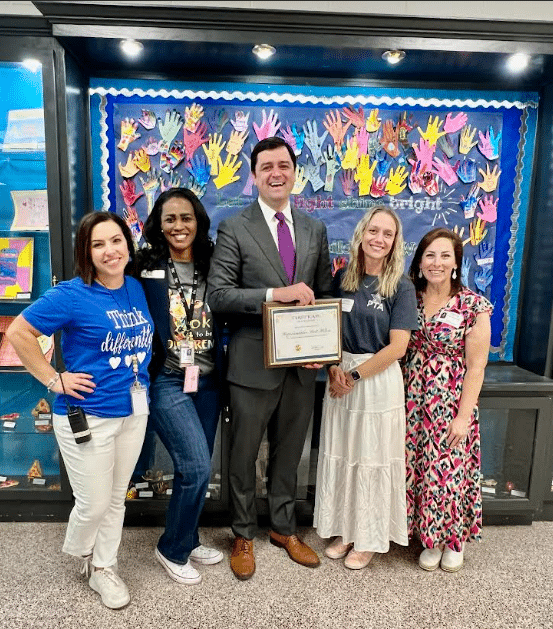
Simpson Elementary School celebrated Exceptional Children’s Week (ECW) last month with five days of special activities to recognize their special needs population and all of their exceptional students.
April 14–18 is set aside each year to celebrate children with disabilities, gifts and talents. This year’s ECW theme was Bridging Gaps and Building Futures, and the school was happy to take part.

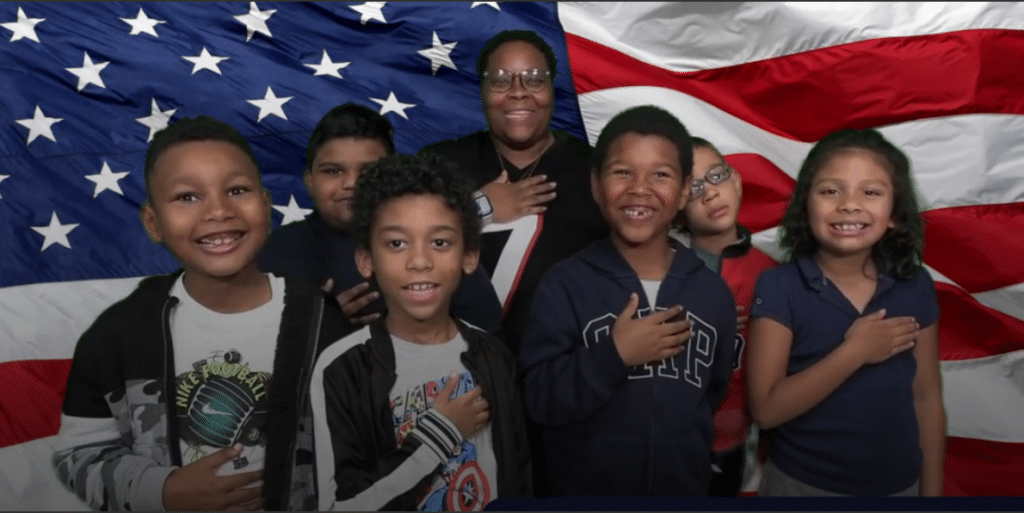

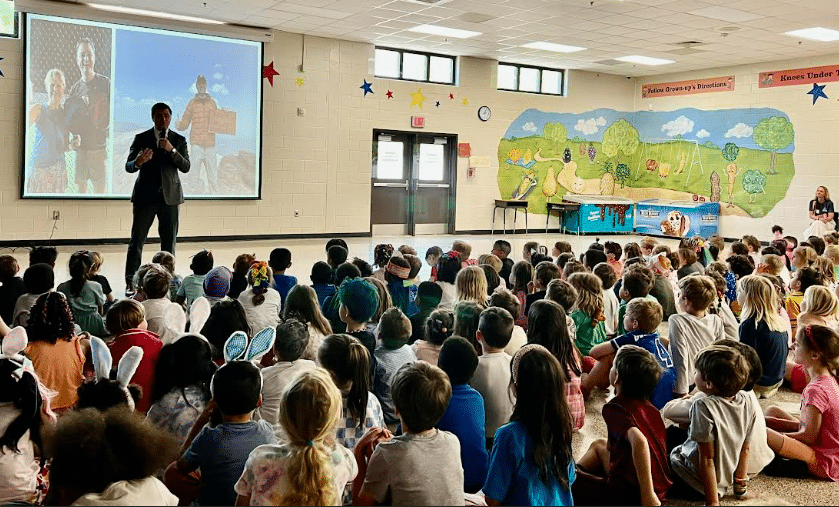
They highlighted each day of the week on the morning news with fun facts about notable people in society — and throughout history — who have overcome challenges with their disabilities, including actor Daniel Radcliffe (who has lived with dyspraxia for his entire life), Tom Cruise, Whoopi Goldberg, Frida Kahlo and Helen Keller.
Simpson Elementary’s technology team also pre-recorded various special needs classes reciting the Pledge of Allegiance every day of the week.
Guest speaker
To end their ECW with a bang, they invited former Simpson Elementary parent, State Representative Scott Hilton, to come in and speak to their K-2 classes about raising his son, Chase (who is autistic and now a student at Norcross High School), and how being different is okay.
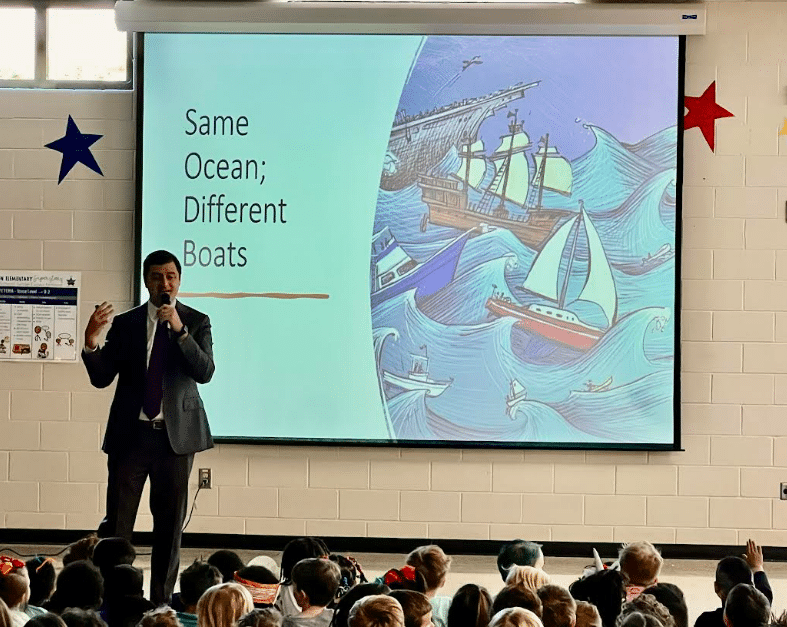
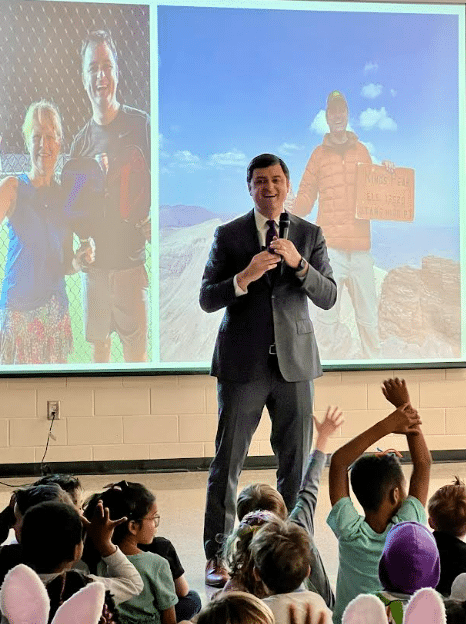
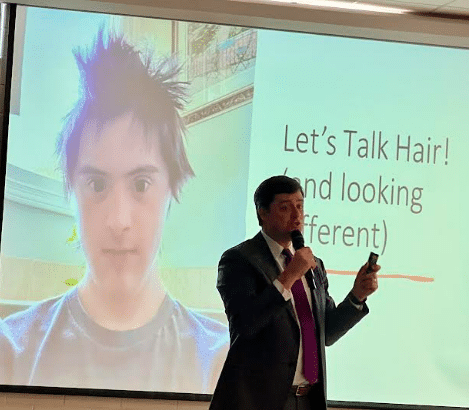
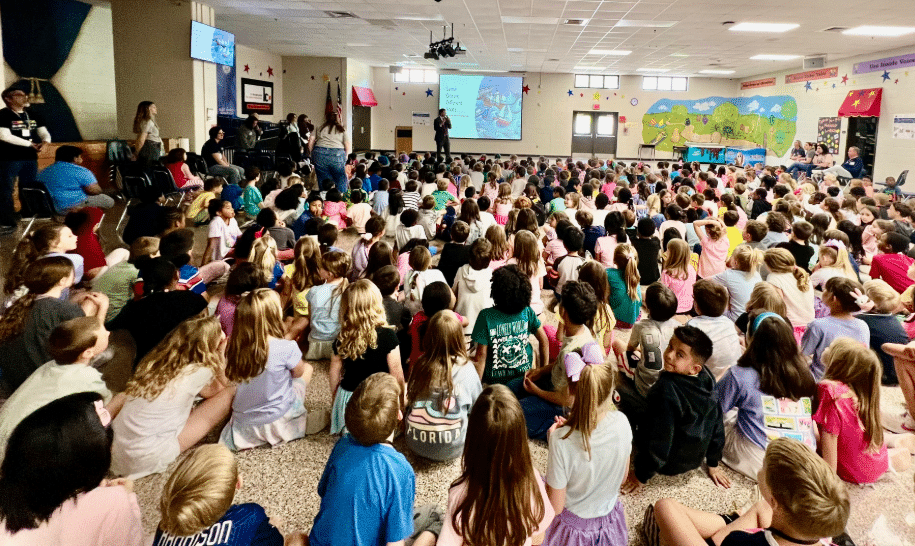
“Showing kindness and being inclusive is the best version of humanity,” said Dr. Taffeta Connery, Simpson Elementary School principal, in a statement about the event.
“Simpson Elementary has a special needs population of 214 (23%) of 946 students. [And] … we strive to ensure that our students are valued, recognized and instilled with high expectations for all.”
For more about Simpson Elementary, visit simpsones.gcpsk12.org.
Related
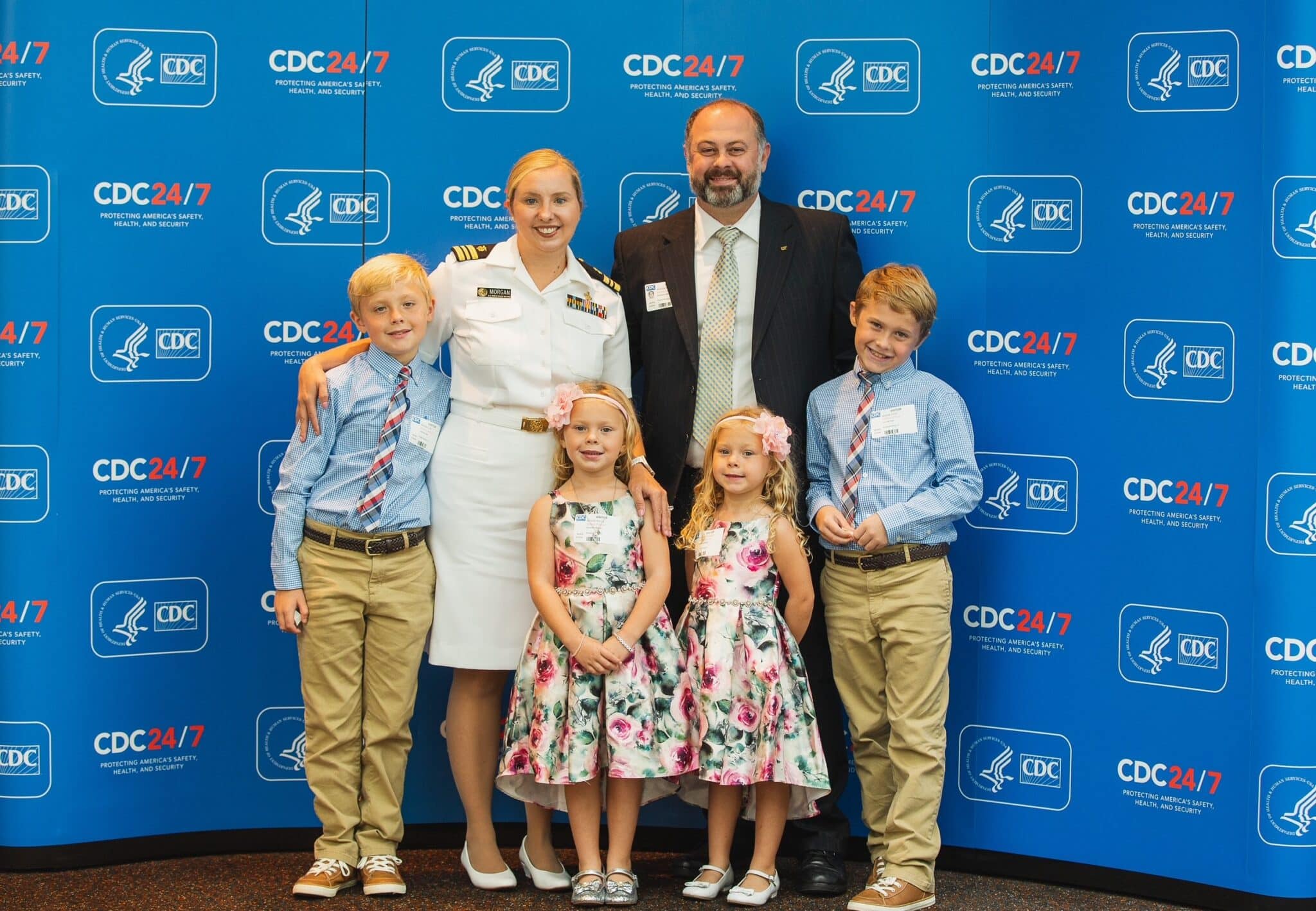
Motherhood comes with a lot of moving parts. For these Peachtree Corners moms, it also means leading teams, building careers and keeping the family schedule running. Most days, all at once.
This Mother’s Day, we’re spotlighting seven women in our community who are doing just that. They’re professionals in full-time leadership roles, showing up to strategy meetings by day and soccer games by night. They’re problem-solvers, planners, caregivers and coaches.
What connects them most isn’t just what they do, it’s how they do it. With intention. With humor. With support from partners, parents, friends and neighbors. And with a deep appreciation for the community they’ve built in Peachtree Corners.
Through their stories, we celebrate more than titles and to-do lists. We honor the quiet, constant work of showing up.
Tracy Lee
Tracy Lee leads with heart and vision as CEO of This Dot Labs, a software consultancy focused on helping businesses solve complex challenges through technology. Her engineering leaders collaborate with major clients like Stripe, DocuSign, Google, Wikipedia and Roblox. She’s passionate about her work.
“I love the mix of problem-solving and people leadership and knowing the work we do can make a real-world impact,” she said.

Tracy brings that same intentionality to her life at home, where she and her husband, Elliott Fouts, are raising three young children: William, 3, and twins Angelina and Marcus, who are 1.5. Despite the busy pace, Tracy is committed to being present in every role she plays.
“I have three full-time nannies and two part-time nannies, as well as girls around the neighborhood who are mama’s helpers to manage the chaos! With the help, we are able to do more and enjoy more time with our kids,” she said. “I try to be fully present, whether I’m in a meeting or building block towers in the living room. It’s never perfect, but we focus on what matters most in the moment.”
Tracy credits her support system for making it all possible. “I have an incredible partner and a strong support system between our nannies, friends and local community,” she said. “We have a local moms group for Asian moms called Georgia Asian Moms, and there are so many moms just in our neighborhood. It’s really great.”
Peachtree Corners has become a meaningful home base for the family. “We absolutely love it here,” she said. “There’s amazing programming for kids at The Forum every Tuesday in the spring and summer. It’s such a gem for young families.”
Weekends often include time outside and community adventures. “Sometimes the best hack is just piling everyone in the wagon and heading out for fresh air!” she said.
Tracy leans on a strong partner, a tight-knit group of friends and a local moms network. “It really takes a village,” she shared. “And I feel lucky to have one.”
Melissa Nicholson
Melissa Nicholson knows what it means to lead with heart and precision. As division vice president of program management & international solutions at Aya Healthcare, she helps internationally educated healthcare professionals enter the U.S. workforce.
“What I enjoy most is the opportunity to support these professionals in achieving their American dream,” she said. “While also contributing to improved patient outcomes across the country.”
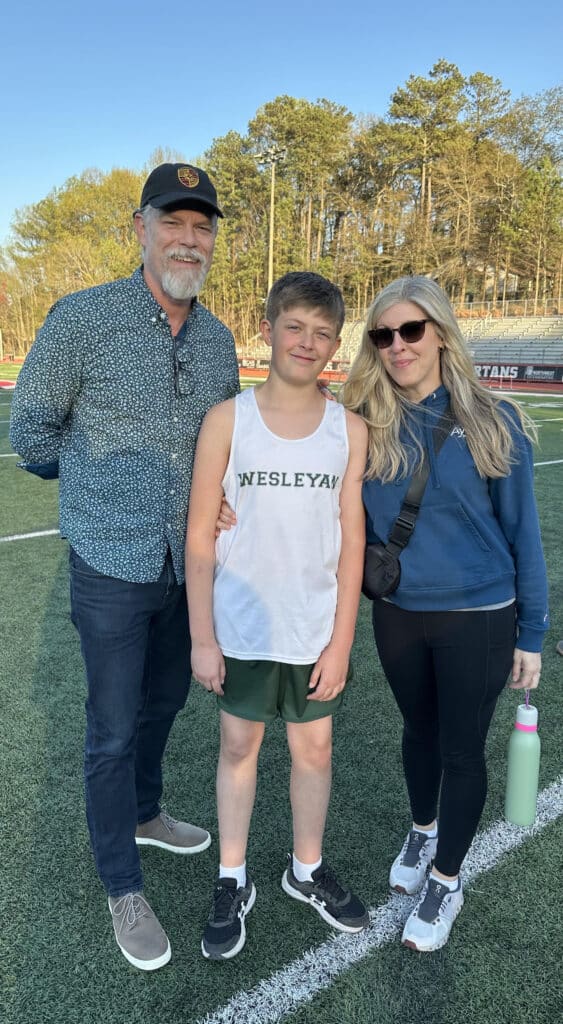
Melissa and her husband Greg recently celebrated 15 years of marriage. Their 12-year-old son, Luke, and a cat named Charlie bring a fun, loving dynamic of their own into the family. After relocating from East Atlanta a decade ago, they quickly embraced the Peachtree Corners community.
“It’s the people who make this community so special,” she said. “We’re truly grateful to count our neighbors as friends.”
Balancing an executive role with family life takes clarity and commitment. “I have to be very intentional with my time,” Melissa shared. She sets boundaries at work and makes sure her team knows when she’s off the clock for important family moments.
Wellness is a key part of her rhythm. “I recently started working out at Orangetheory Fitness,” she said. “I’ve noticed a significant boost in both energy and focus.” Sundays are for church and reflection.
When she travels for work, Greg holds it down at home. “We rely on each other to keep life running smoothly,” she said. “I’m grateful every day for that kind of partnership.”
On weekends, Melissa prioritizes quality time. Whether that’s a hike, pool day or baking something from scratch. “We’ve learned that if we don’t prioritize those moments, the weekends can quickly get taken over.”
Diva Hicks
For Diva Hicks, work isn’t just a job, it’s personal. As creative senior manager at CURE Childhood Cancer, her mission runs deep.
“At 12 years old, my sister was diagnosed with cancer,” she said. “CURE, in its early days, was a resource for my family.”

Her sister survived and now thrives. That experience shaped Diva’s career and continues to inspire her today. “This is my opportunity to give back to CURE for what it did for my family,” she said. “It’s rare to find a place where your purpose and passions collide.”
CURE also welcomes her whole family into the fold. “I get to bring my kids to events all the time,” she said. “They love feeling like they are a part of my work.”
Diva lives in Peachtree Corners with her husband John, their children Adair, 8, and Tripp, 6, and two golden doodles. “There is a sense of community here that I think is special,” she said.
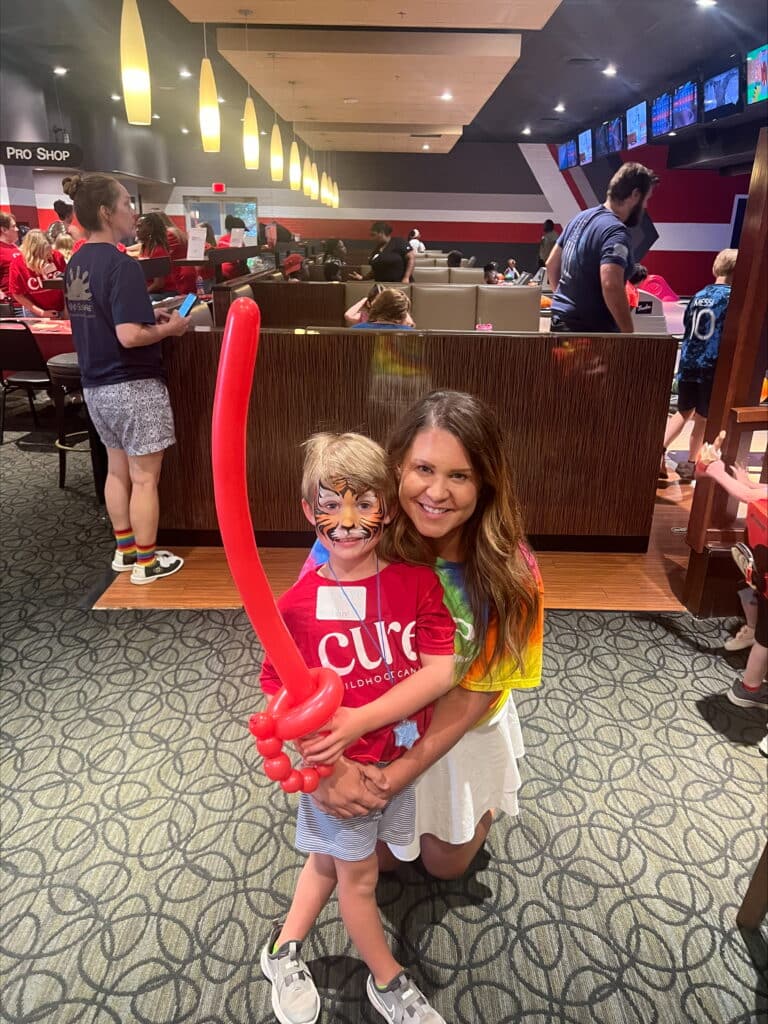
Balance is a daily effort. “John and I have tackled who helps with homework and on what days,” she said. “I would not be able to be the mom that I am without my village.”
She leads school committees and never misses events. “Is it easy? No,” she said. “But I honestly say, it’s not easy for any parent.”
Diva’s motivation is clear. “I want Adair to look at me and see that she can be a mom and have a career too.”
The family stays grounded with tennis weekends and careful planning. “We live by our calendar,” she said. “The more prepared I am, the easier life is.”
Kate Martin
Kate Martin knows how to bring structure to busy systems. As senior director of financial planning and analysis at Alloy Roofing, she finds energy in collaboration and clear strategy.
“In this role, I work closely with various teams across the business,” she said. “It supports the company’s strategy and performance.”
Kate and her husband, Nathan, are raising two children, 14-year-old Elliot and 10-year-old Evan, in Peachtree Corners. After ten years in the area, she credits the people for making it feel like home. “Life wouldn’t be the same without the relationships we’ve built here,” she said.

Balance starts with planning. “We keep a central Google calendar synced with all the family commitments that we review daily,” she said. “On Sundays we write on the kitchen boards.” Their chalkboard becomes the weekly roadmap, from meals to responsibilities.
“Seeing things laid out visually keeps me from overcommitting,” she added.
The family stays grounded by recognizing progress. “What keeps me motivated is celebrating both the big and small wins together,” she shared. “Sometimes, making it through the week is a victory in itself.”
Kate relies on a strong network. “We are very fortunate to have my parents nearby,” she said. “I also have an amazing network of women here in Peachtree Corners that I rely on.”
Her favorite hack? “An app Nathan created to help manage our calendars,” she said. “He created a solution to integrate these webcal subscriptions into a central subscription hub.” It’s called Skedj, and they’re piloting it now. “If you know this struggle and want to help us pilot the app, check out skedj.co!”
Linda Luna
As vice president at RSUI, Linda Luna manages risk while empowering people. She leads a team of underwriters who handle professional liability and cyber insurance. “I really enjoy my job because of its dynamic nature and the opportunity to help people in meaningful ways,” she said.
Whether she’s mentoring her team or protecting clients’ businesses, Linda finds value in impact. “It’s rewarding to know that my work has a positive impact on both my colleagues and our clients.”

She and her husband, Ruben, are raising their two children, Dawson, 10, and Ava, 6, in Peachtree Corners. Her parents, though not under the same roof, are a constant part of daily life. “They help keep things running smoothly on the home front,” she said.
After nine years in the community, Linda has grown to love its blend of charm and convenience. “There is always something to do,” she said. “Whether it’s grabbing a bite at Ted’s or spending time with friends at Town Center.”
Balance comes from structure. “By establishing a solid schedule and sticking to it, I can ensure that my work commitments are met,” she said. “Being fully present allows me to strengthen my connection with my loved ones.”
When things get busy, she takes a practical approach. “Breaking it down into smaller, manageable tasks makes it much more approachable,” she said. “I remind myself to keep the bigger picture in mind and not sweat the small stuff.”
Linda’s support system is strong. “It truly takes a village, and I’m so grateful for mine,” she said. The family’s favorite tradition? A beach trip to 30A every May. “It’s our way of unwinding, reconnecting and making lasting memories together.”
Allison Blasetti
Allison Blasetti holds a national leadership role at Transamerica in the employee benefits division — a position that constantly challenges and motivates her. “What I enjoy most is the opportunity to use my talents to help my team,” she said. “I’m always growing and learning.”
She and her husband, John, are raising daughters Annie Mae, 8, and Olive, 6, in Peachtree Corners, where they’ve built strong ties in the community. “The amenities in our city provide many opportunities to run into friends around town or plan meet-ups,” she said.

Allison works from home and prioritizes clear boundaries. “I turn off my app notifications because it quickly pulls me back in to work,” she said. “I also have a dedicated workspace in my house where I can leave at the end of the workday.”
She’s developed the habit of resetting her mindset, as well. “I quickly recognize [when] I’m mentally ‘at work’ and actively redirect my thoughts back to being in the present moment.”
Allison’s mornings begin at Burn Bootcamp, where she finds motivation and connection. “Spending an hour with my Burn community helps me get grounded for the day,” she said.
To stay organized, she and her husband use a shared family calendar. Her mom steps in often, especially when work travel ramps up. “I really don’t know what we would do without her.”
On weekends, Allison coaches Olive’s soccer team with the Peachtree Corners Football Club. “It brings me so much joy to be outside, see my soccer friends and watch my girls have fun,” she said. “Coaching makes it even better because I get to support the community that means a lot to me.”
Samantha Morgan
Samantha Morgan is a commander in the U.S. Public Health Service, currently assigned to the Centers for Disease Control and Prevention. Over her career, she’s responded to major public health threats, including Ebola, Zika and COVID-19. Today, her work centers on injury prevention, with a focus on issues like suicide, drowning and traumatic brain injury.
“What I enjoy most is being part of CDC’s mission to save lives and protect people,” she said. “I’m proud to contribute to work that makes a tangible difference in communities across the country.”
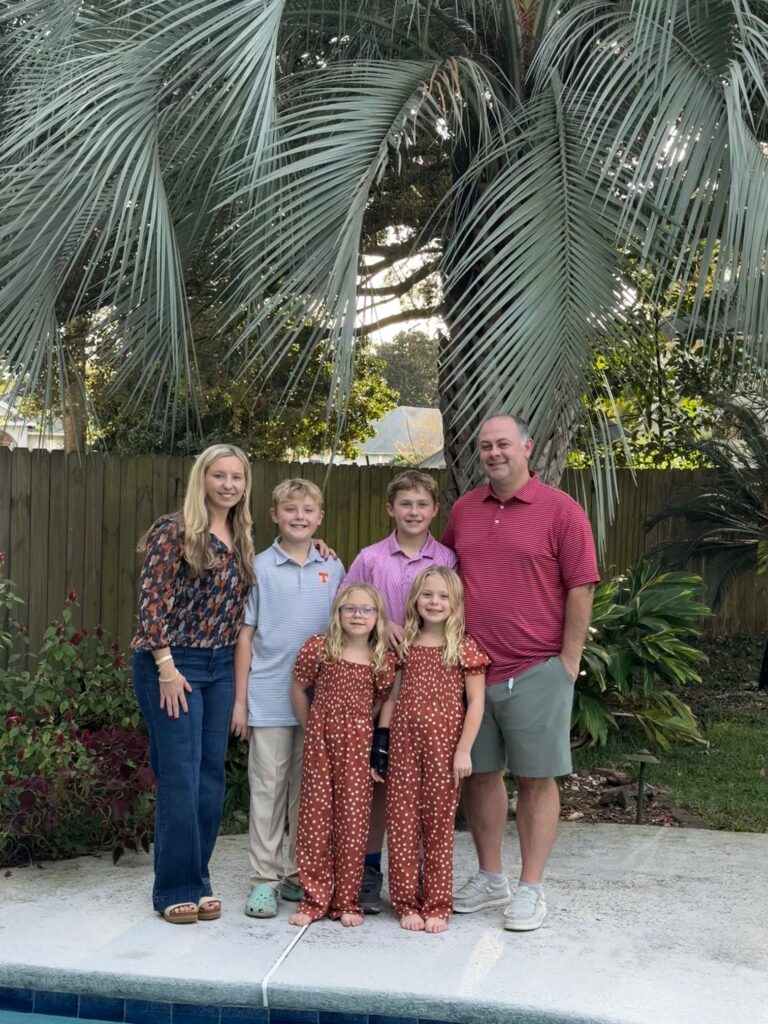
At home in Peachtree Corners, Samantha and her husband, Brian, are raising two sets of twins. Luke and Elliot are 12-years-old and love baseball, golf, basketball and band. Charlotte and Noelle are 8-years-old and enjoy piano, tumbling and tennis. “Life with four kids is wonderfully busy,” she said. “I often joke that I’m an unpaid Uber driver!”
After more than a decade in the neighborhood, Samantha credits their support system for helping them manage the day-to-day. “Our neighbors and friends — our village — have supported us through the hardest moments and celebrated life’s greatest joys with us,” she said.
Structure is key to keeping things on track. “We live and breathe by our family calendar,” she said. “Shared schedules, group texts and carpooling help us keep things running.”
Her children remain Samantha’s biggest motivators. “They know, ‘mom’s going to work to help make the world a safer place,’” she said.
The family also leans on routines and simple joys. “Checklists are my go-to mom hack,” she shared. One of their favorite traditions is make-your-own-pizza night. “It’s messy, silly and something we all genuinely look forward to.”
The seven women featured here offer a glimpse into the lives of working moms in Peachtree Corners. Each one balances career, family and community with care and intention. They are just a few of the many women — both working and stay-at-home — who nurture, organize and uplift the people around them every day.
Whether leading teams or guiding their children, mothers across this community show up with strength, love and quiet determination.
You’ll find this story in the May/June issue of Peachtree Corners Magazine, available in print and digital edition.
Related
City of Peachtree Corners
Official City Merchandise Line Debuts This Saturday at Town Green
Published
5 days agoon
May 6, 2025
This Saturday, May 10, residents and visitors are invited to experience the debut of Peachtree Corners’ official merchandise collection at the Town Green. The pop-up shop will be open all day, beginning at 8 a.m., located directly behind the former Jinbei restaurant.
This pop-up shop is provided through a pilot program with Vox-pop-uli and the City of Peachtree Corners.

“We’re thrilled to showcase our city’s spirit through this exciting new merchandise line,” said Louis Svehla, City of Peachtree Corners director of communications. “There’s something for everyone, whether you’re a proud local or just visiting. We are excited about testing this pilot program to raise funds for continued improvements at Town Green and events.”
Featured items include:
- brand new concert-themed apparel
- city-branded merchandise
- limited edition collectibles
- perfect Mother’s Day gift selections
With Mother’s Day approaching, shoppers will find unique, locally inspired gifts guaranteed to delight mom with something she doesn’t already own.

Visitors can browse and purchase items throughout the day, with friendly staff available to assist with selections.
Event details
Date: Saturday, May 10
Time: Starting at 8 a.m.
Location: Town Green (behind former Jinbei location)
Payment methods accepted: Cash and credit card accepted
Related
Read the Digital Edition
Subscribe
Keep Up With Peachtree Corners News
Join our mailing list to receive the latest news and updates from our team.
You have Successfully Subscribed!

Katherine Lafourcade — A Journey of Passion, Resilience and Giving Back

GA Tech Launches First-of-its-Kind GT Atrium in Peachtree Corners

Digital Edition

PCBA Announces 2025 Scholarship Winner

Official City Merchandise Line Debuts This Saturday at Town Green

Paul Duke STEM High School Student Earns CGO Scholarship

World Blood Donor Day Starts Here: Theo’s Miracle, Katherine’s Mission [Podcast]

Executive Function: A Tribute to Working Moms

City of Peachtree Corners Awarded Certificate of Achievement From GFOA for Seventh Straight Year

Simpson Elementary Marks Exceptional Children’s Week

Executive Function: A Tribute to Working Moms

Official City Merchandise Line Debuts This Saturday at Town Green

Peachtree Corners Grows Business Opportunities Through Economic Development

Digital Edition

World Blood Donor Day Starts Here: Theo’s Miracle, Katherine’s Mission [Podcast]

Paul Duke STEM High School Student Earns CGO Scholarship

Light up the Corners [Video]

Capitalist Sage: Business Leadership in Your Community [Podcast]

Cliff Bramble: A Culinary Adventure through Italy

Top 10 Brunch Places in Gwinnett County

A Hunger for Hospitality

THE CORNERS EPISODE 3 – BLAXICAN PART 1

Top 10 Indoor Things To Do This Winter

The ED Hour: What it takes to Remove Barriers from Education

Peachtree Corners Life
Topics and Categories
Trending
-
City of Peachtree Corners5 days ago
Official City Merchandise Line Debuts This Saturday at Town Green
-
Community5 days ago
Executive Function: A Tribute to Working Moms
-
Business5 days ago
Peachtree Corners Grows Business Opportunities Through Economic Development
-
Community4 days ago
Simpson Elementary Marks Exceptional Children’s Week


